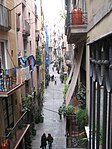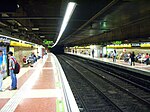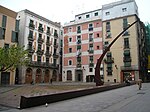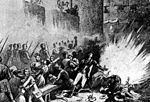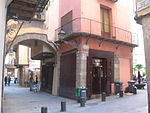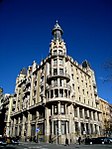Reial Acadèmia Catalana de Belles Arts de Sant Jordi

The Reial Acadèmia Catalana de Belles Arts de Sant Jordi (Catalan pronunciation: [rəˈjal əkəˈðɛmi.ə kətəˈlanə ðə ˈβeʎəz ˈaɾts ðə ˈsaɲ ˈʒɔɾði], in English "Royal Catalan Academy of Fine Arts of Saint George") is a Catalan art school located in Barcelona. The president is the architect Jordi Bonet i Armengol. The institution was founded as a cost-free school of painting, sculpture and architecture under the former name Escola Gratuïta de Disseny by the Catalan trade council in 1775. In 1849 the school became a member of the provincial academies of arts in Spain (Acadèmies Provincials de Belles Arts), and in 1900 it became autonomous. Today, the ancient school is divided into the faculty of fine arts of the University of Barcelona and the vocational art school, named Escola Superior de Disseny i d’Art Llotja. In 1930 the RACBASJ lost its provincial character and thenceforward it has perceived itself as the Catalan academy of arts. The courses offered include also music and other fine arts.
Excerpt from the Wikipedia article Reial Acadèmia Catalana de Belles Arts de Sant Jordi (License: CC BY-SA 3.0, Authors, Images).Reial Acadèmia Catalana de Belles Arts de Sant Jordi
Pla de Palau, Barcelona
Geographical coordinates (GPS) Address Nearby Places Show on map
Geographical coordinates (GPS)
| Latitude | Longitude |
|---|---|
| N 41.382402777778 ° | E 2.1835861111111 ° |
Address
Pla de Palau
Pla de Palau
08001 Barcelona (Ciutat Vella)
Catalonia, Spain
Open on Google Maps

